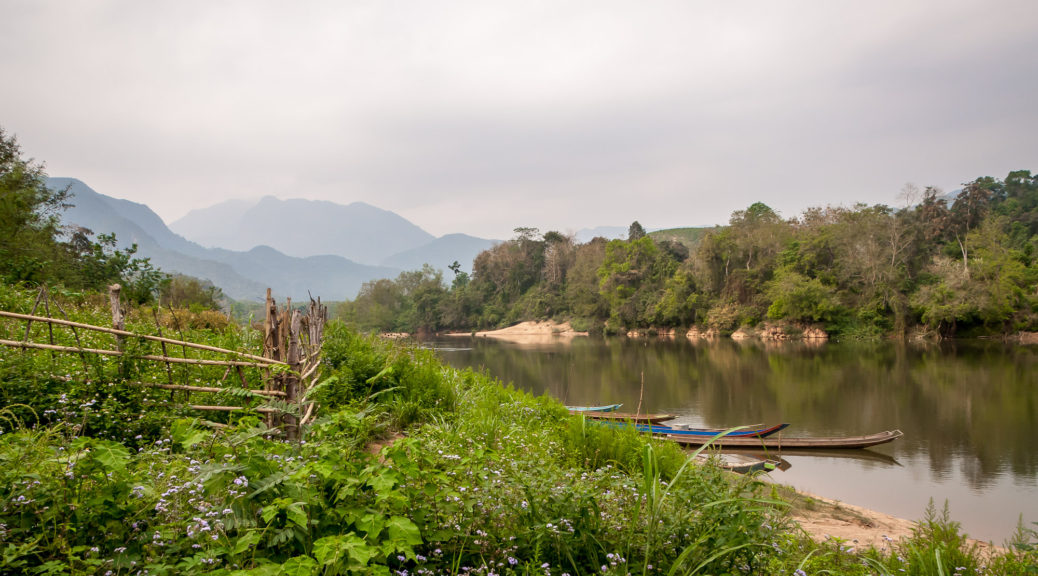
Trekking in Northern Laos
Laos is a sparsely populated, rural, landlocked nation whose geography is mostly defined by rivers and huge mountain ranges. Unlike other countries in Southeast Asia, there are no beaches or ultra-modern mega-cities to attract visitors. Instead, the draw here is the unique and awe-inspiring natural beauty. Therefore we knew that hiking would be the best way to truly see and get to know Laos.
Trek #1
We did two treks in Laos. The first was a day trip from Luang Prabang organized through Tiger Trail tour company. The trek started with a boat trip down the Nam Kahn to a Khmu village. On the way our tour guides explained that the three major ethnic groups in Laos are the Lao, who mostly live in the lowland cities and towns, the Khmu, who populate villages midway up the mountains, and the Hmong who build their villages and farms high up in the mountains.
The Khmu village where we started the trek was quite modern with running water and electricity and many concrete buildings, including a school.
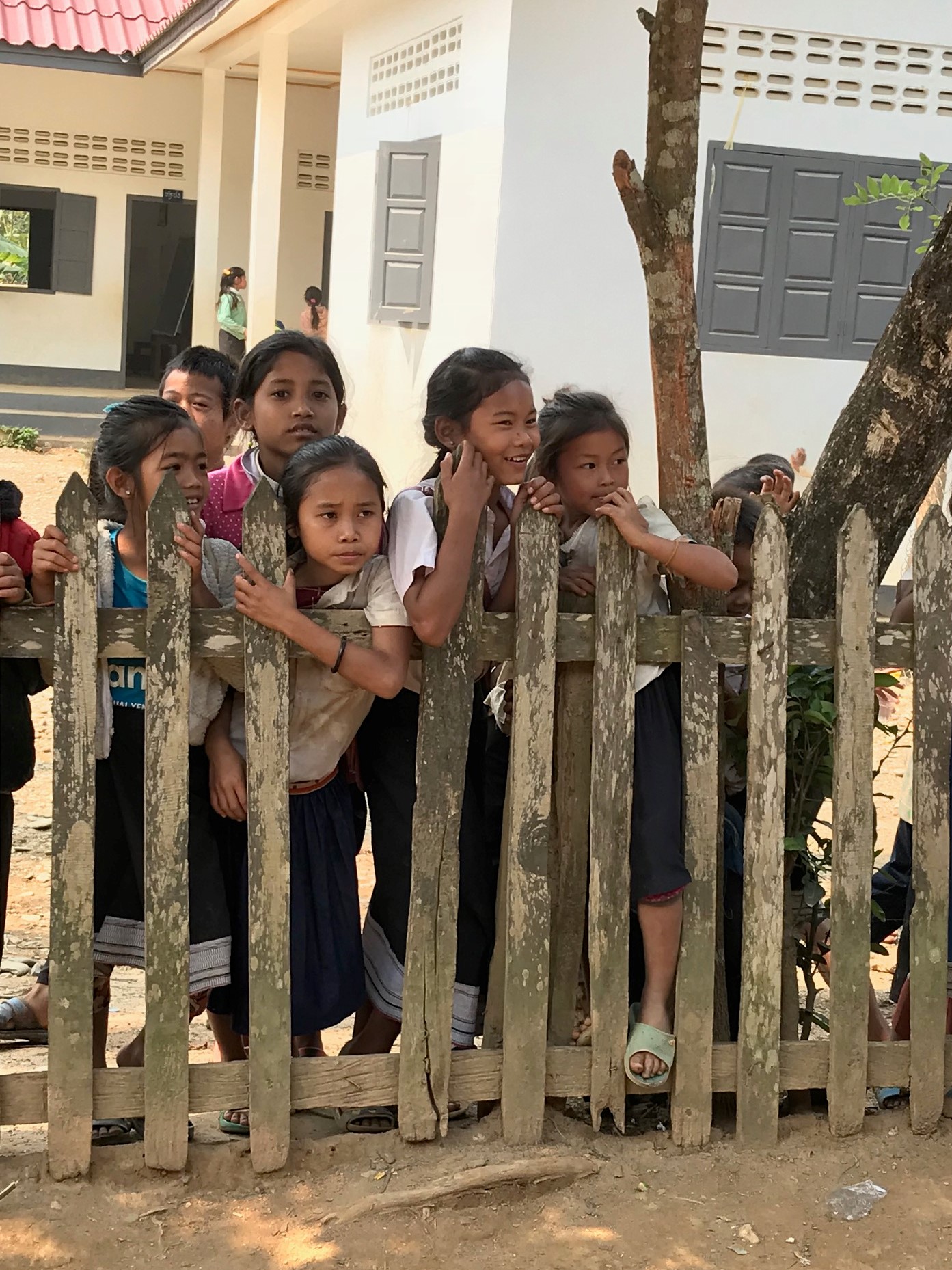
From here we began our ascent up the mountains and toward the Hmong village where we would stop for lunch. As we climbed our guides pointed out various plant and inspect species that we passed, including teak trees and several species of spiders.
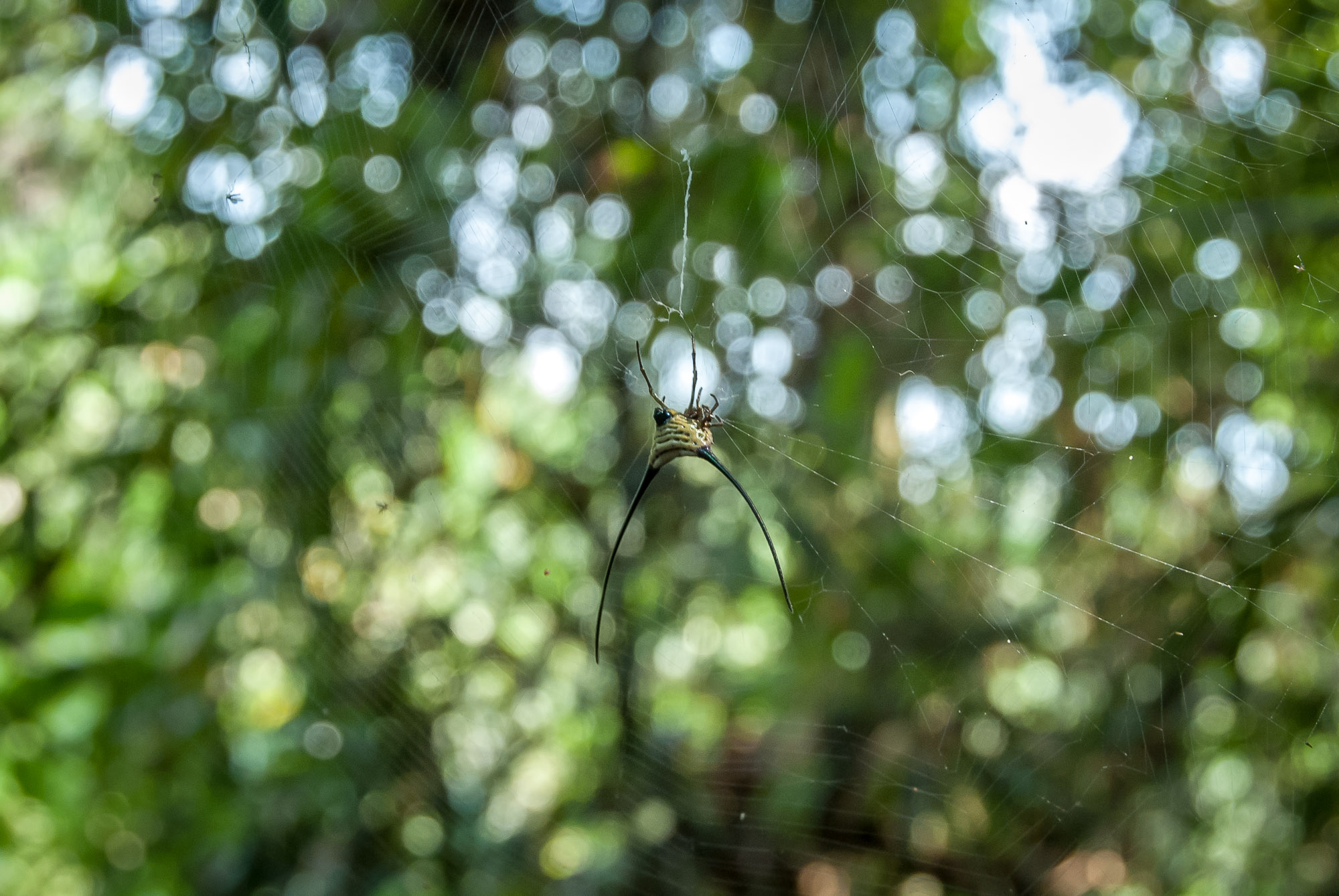
After a grueling couple of hours we made it to the Hmong village at the top of the mountain. This village was much more primitive than the first one we visited. It was made up of only a few bamboo houses with no electricity or running water. The children living here make the trek we had just done every day to go back and forth to school in the Khmu village below.
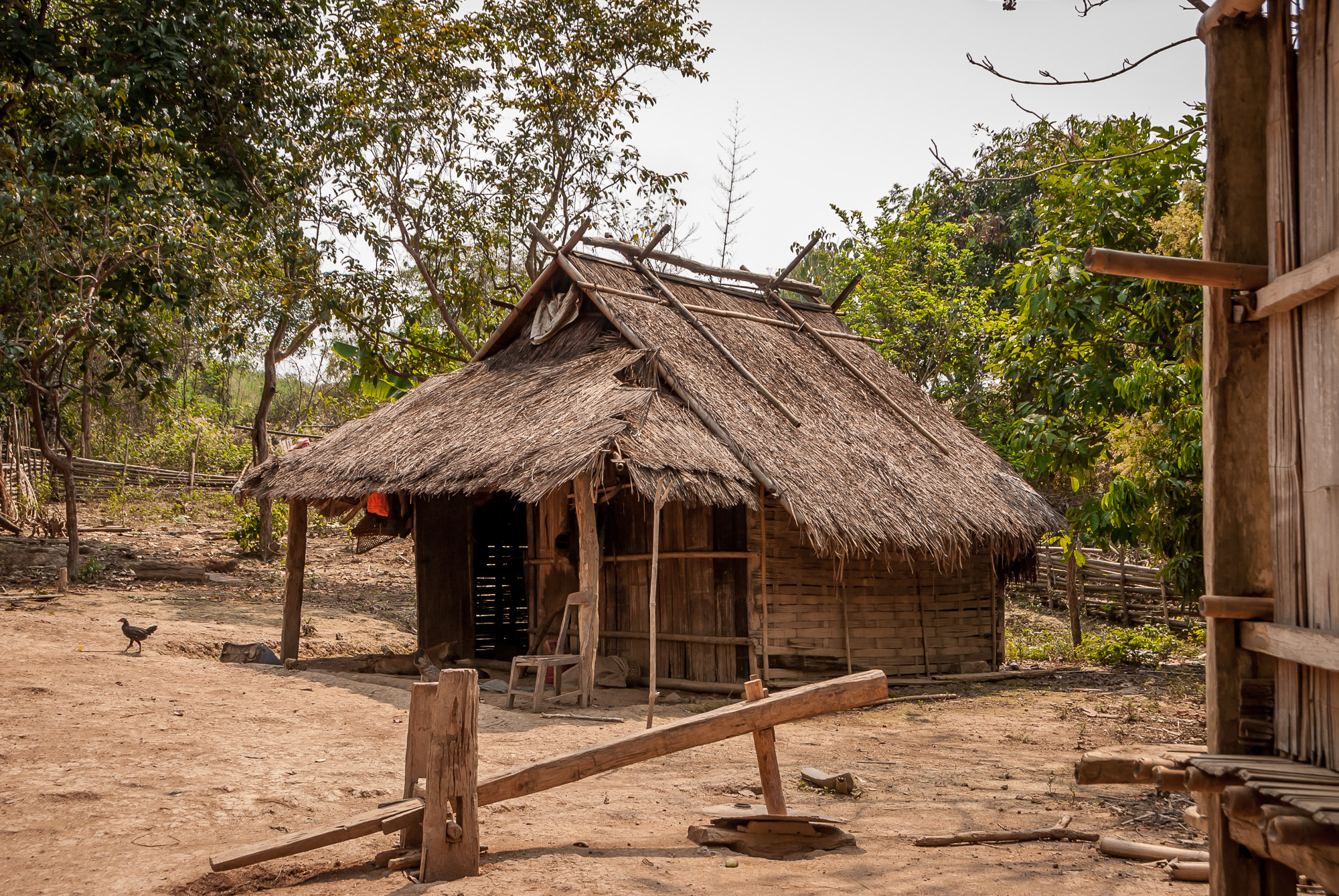
Both of our guides were Hmong and one of them had actually grown up in this village. It was fascinating to talk to him about how the village had changed since he had grown up there, with most of the families relocating to lower ground to be closer to jobs and educational opportunities for their children. I wish I had been able to ask him more about his own story and how he had gone from growing up in a community of isolated rural farmers to being one of the best English speakers we have encountered on this trip.
After lunch we began our descent back down the mountain and through the valley below. It was amazing to see the landscape change from dense jungle to teak plantations to open fields and farms.
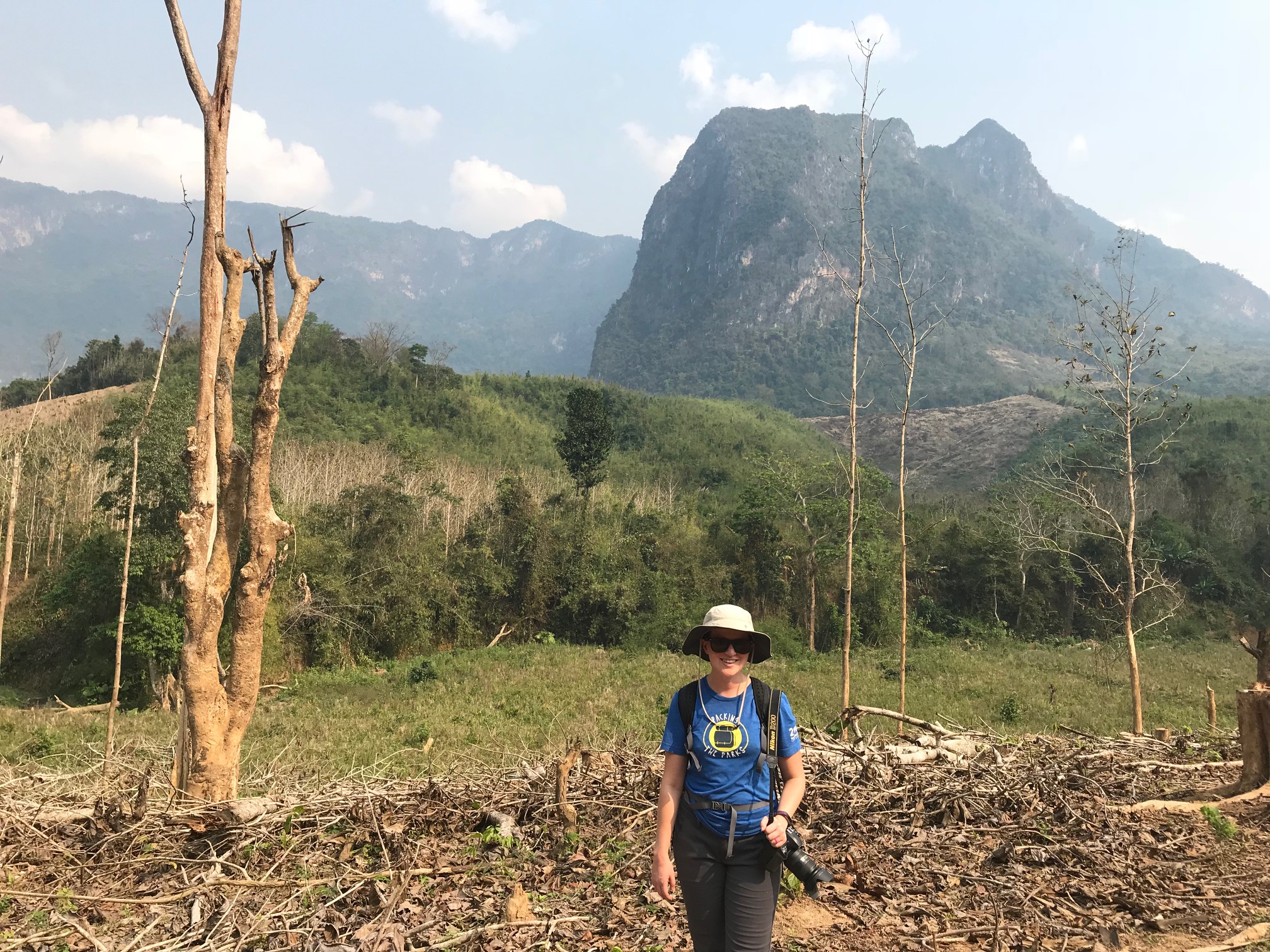
Overall, this trek was a fantastic experience and I would highly recommend Tiger Trail to anyone visiting Laos. The guides were locals who knew and understood the communities we visited and they also spoke impeccable English. It was great to be able to have conversations with them about complex topics such as the fate of Hmong refugees displaced after the Vietnam War and environmental issues Laos is currently grappling with.
Trek #2
From Luang Prabang we took a bus north to the little town of Nong Khiaw. This rural community is nestled in the mountains and spans the Nam Ou river. The town itself, though scenic, doesn’t have much to offer but we had read that it was an excellent jumping off point for a longer overnight trek into the surrounding mountains.
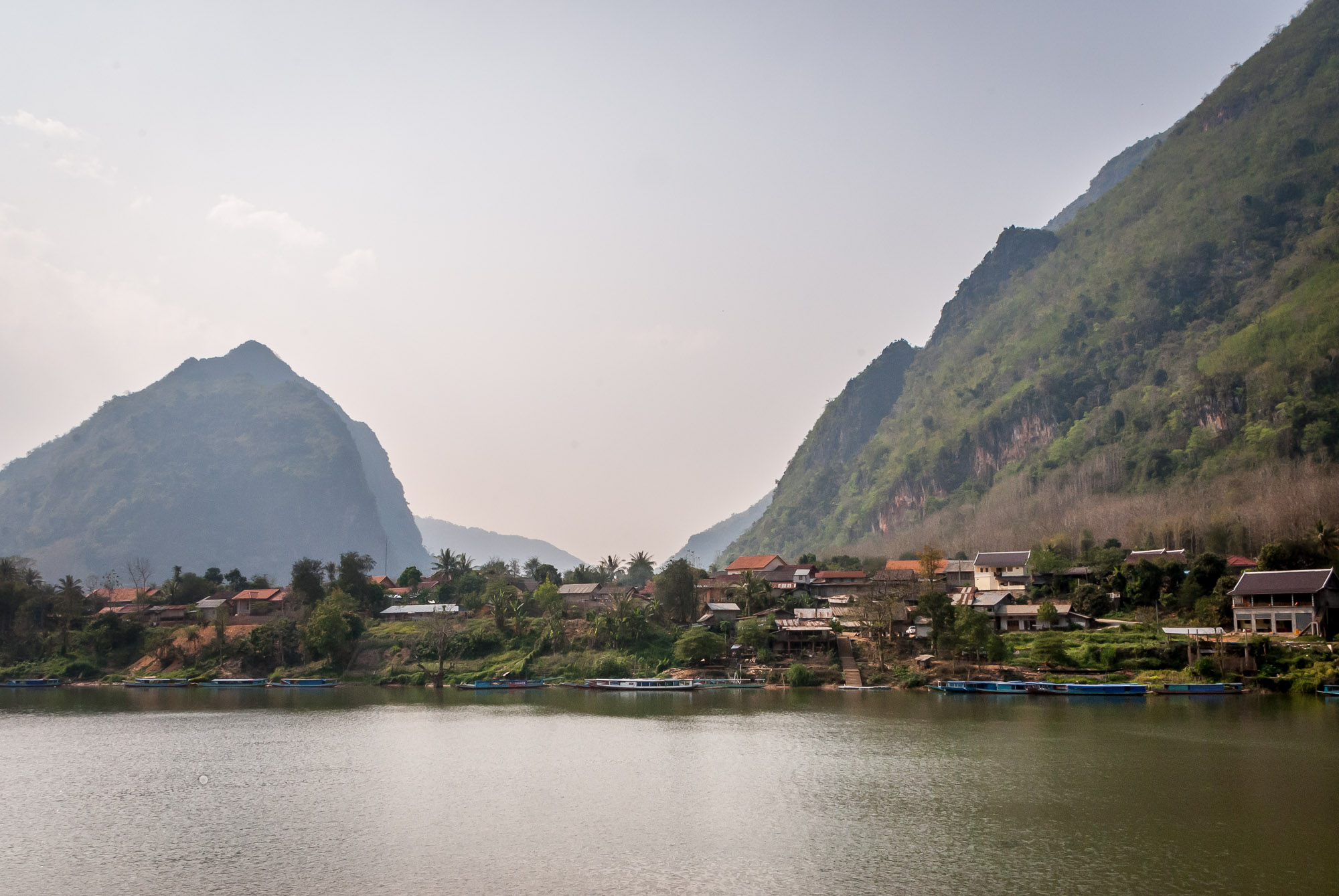
We organized our two day trek through Green Discovery, another eco-conscious tour company operating in the area. Our group was small, just the two of us and a Belgian girl led by our local guide. The trek started out easy enough, passing through rice paddies and rubber plantations.
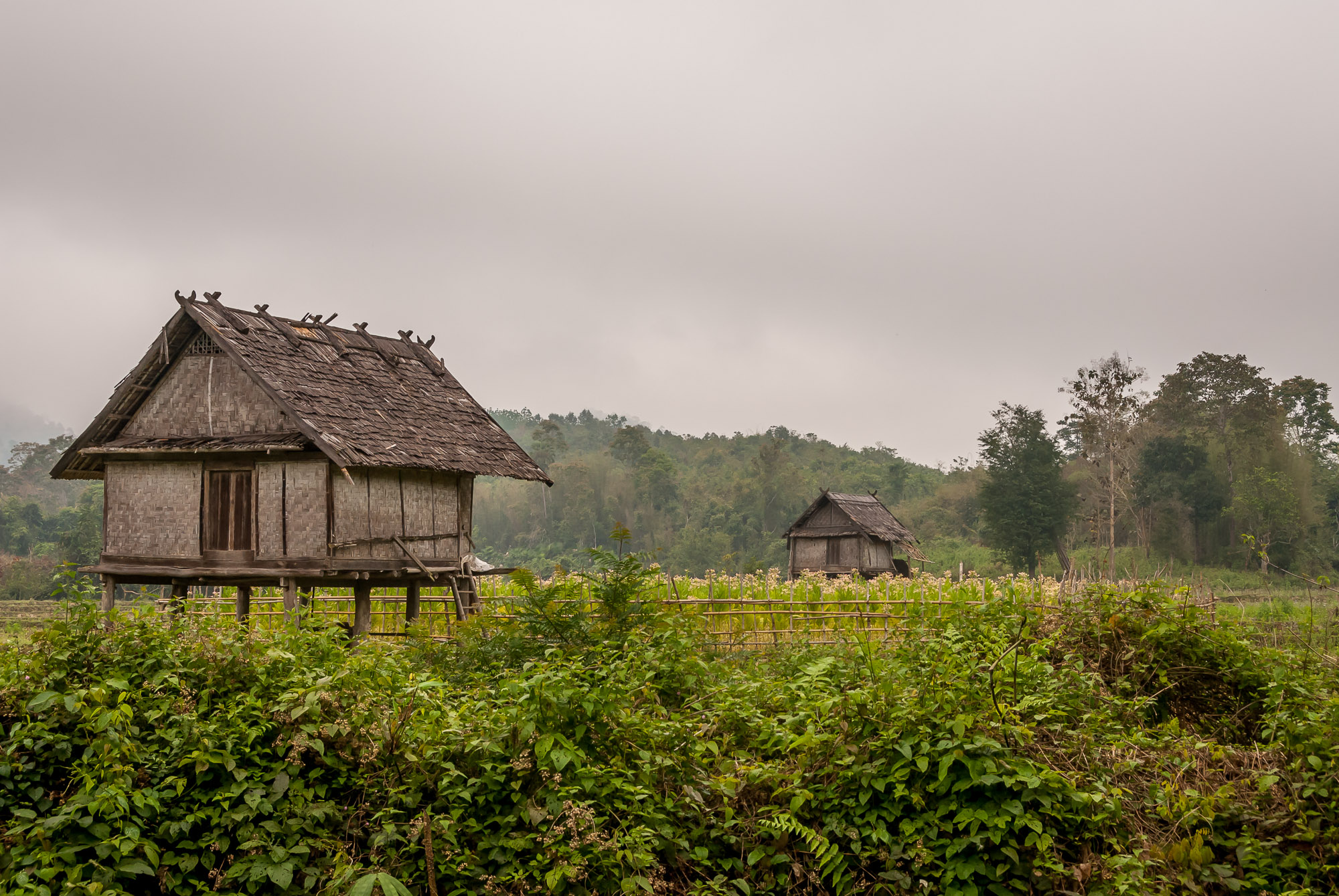
However, we soon had to start making the grueling climb up the mountains toward the Hmong village where we would be spending the night. It was incredibly challenging but we were rewarded with absolutely gorgeous views of mountains receding into the distance as far as the eye could see.
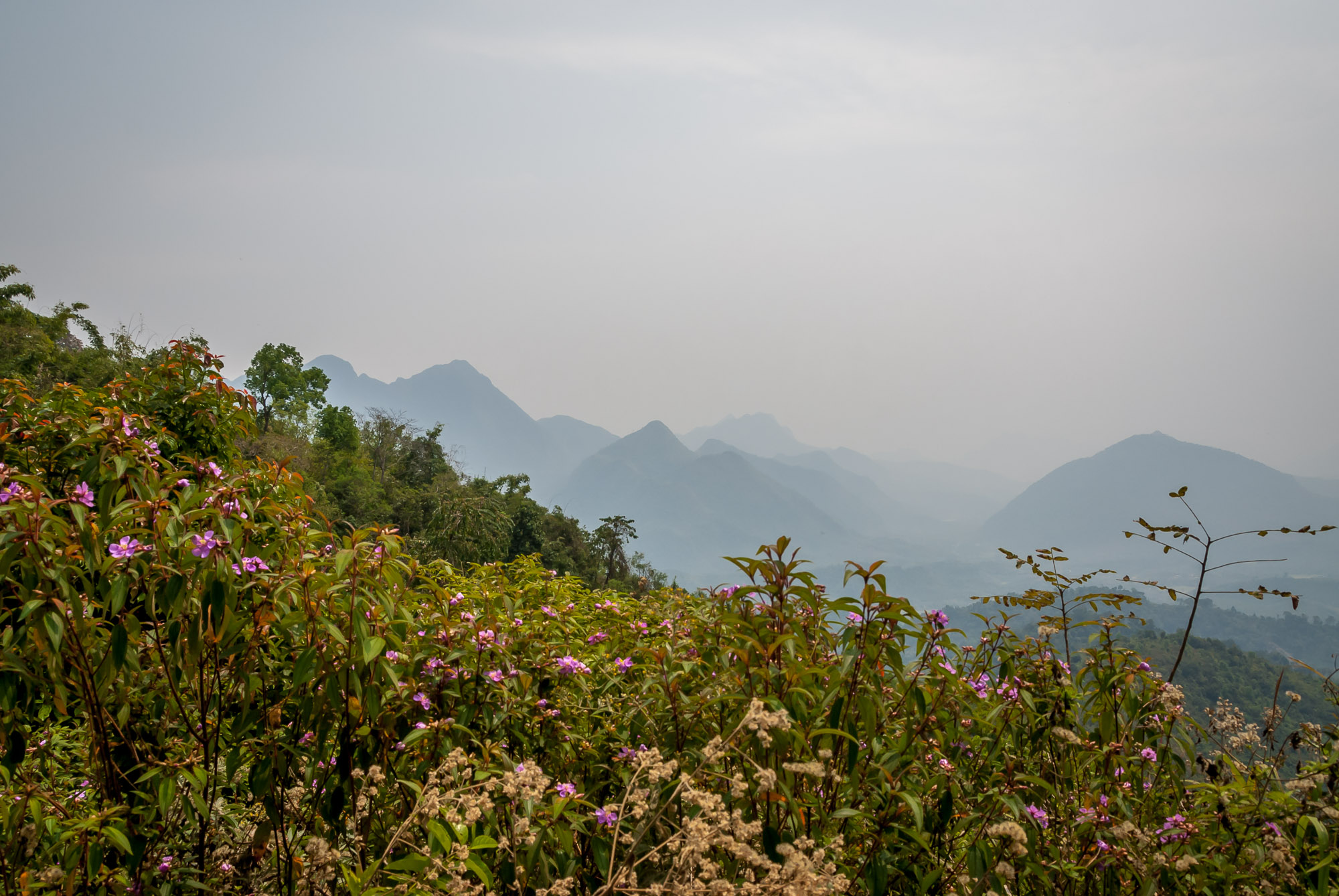
We did get a quick break for lunch which our guide served on a huge banana leaf that he plucked from a nearby tree.
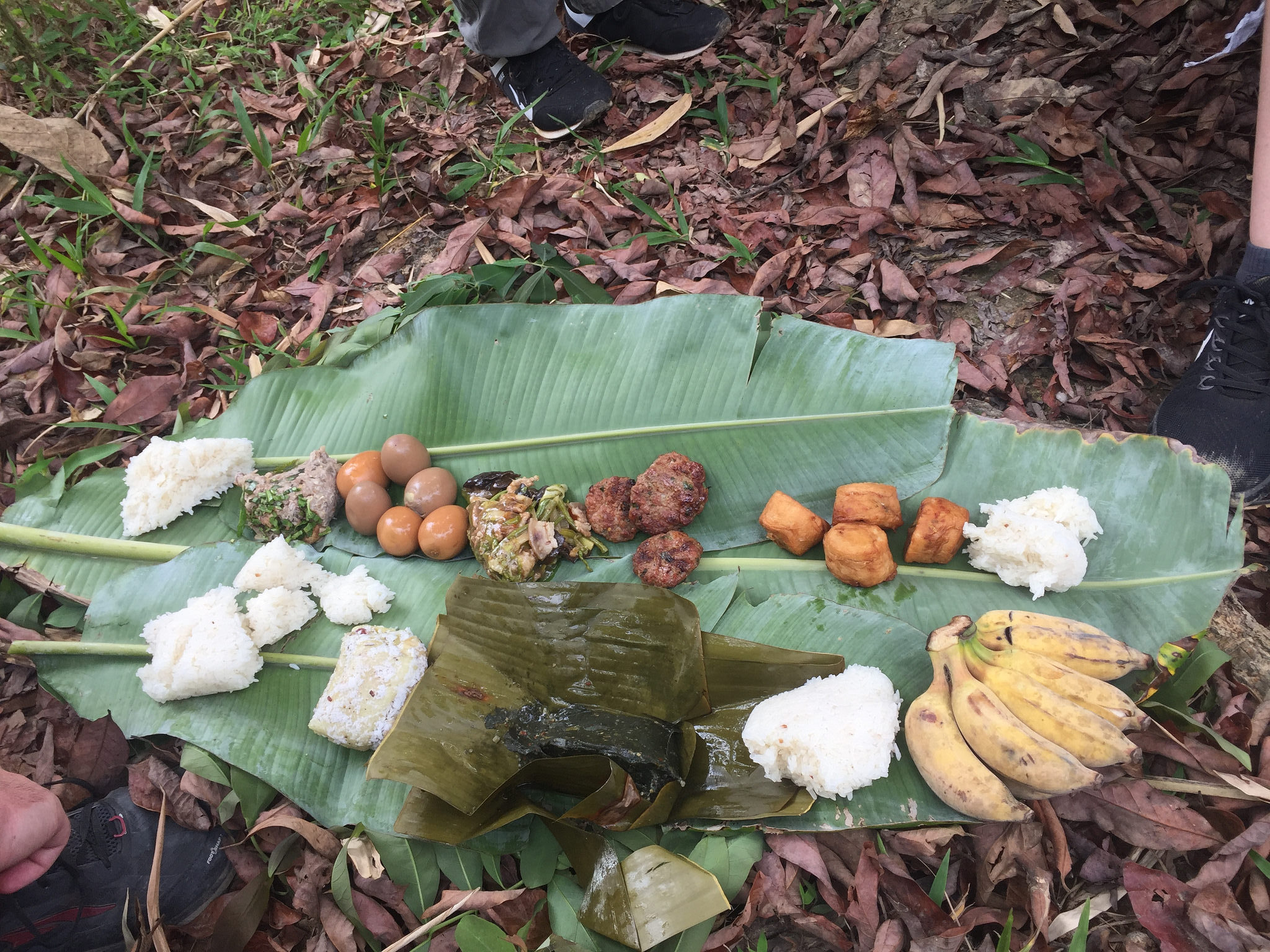
After a few more strenuous hours of hiking we finally made it up to the village where we would be spending the night. At this point we had passed through a lot of local villages during our time in Laos, some more developed than others. I had assumed that the one we’d be sleeping in would be on the more modern end of the spectrum. I was wrong.
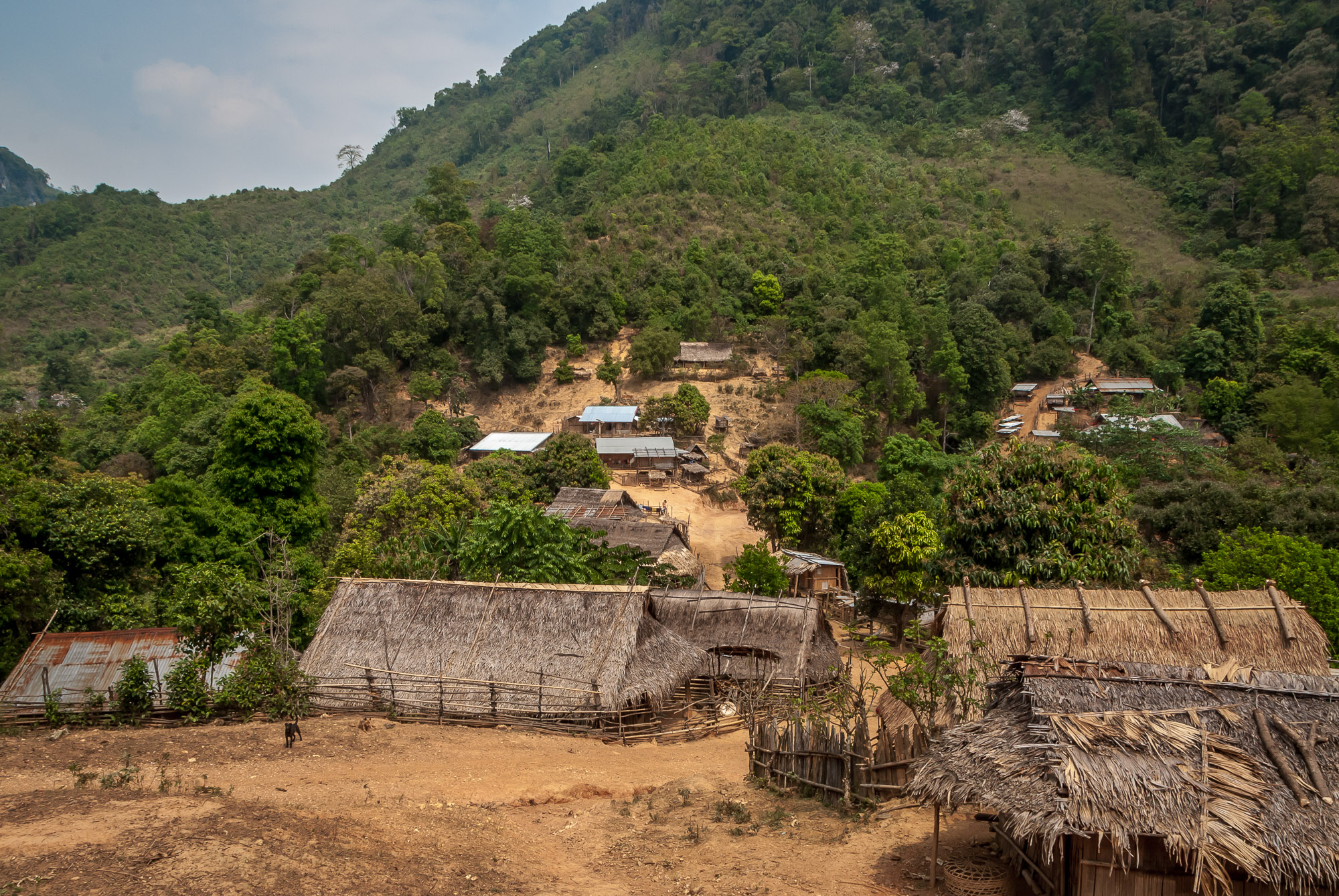
This village had no running water and no electricity. The one room home where we slept was made of bamboo siding with a thatch roof. The only furniture was a raised bamboo platform where we slept and one other table used to store food and kitchen supplies. Our meals were cooked over an open flame on the front porch.
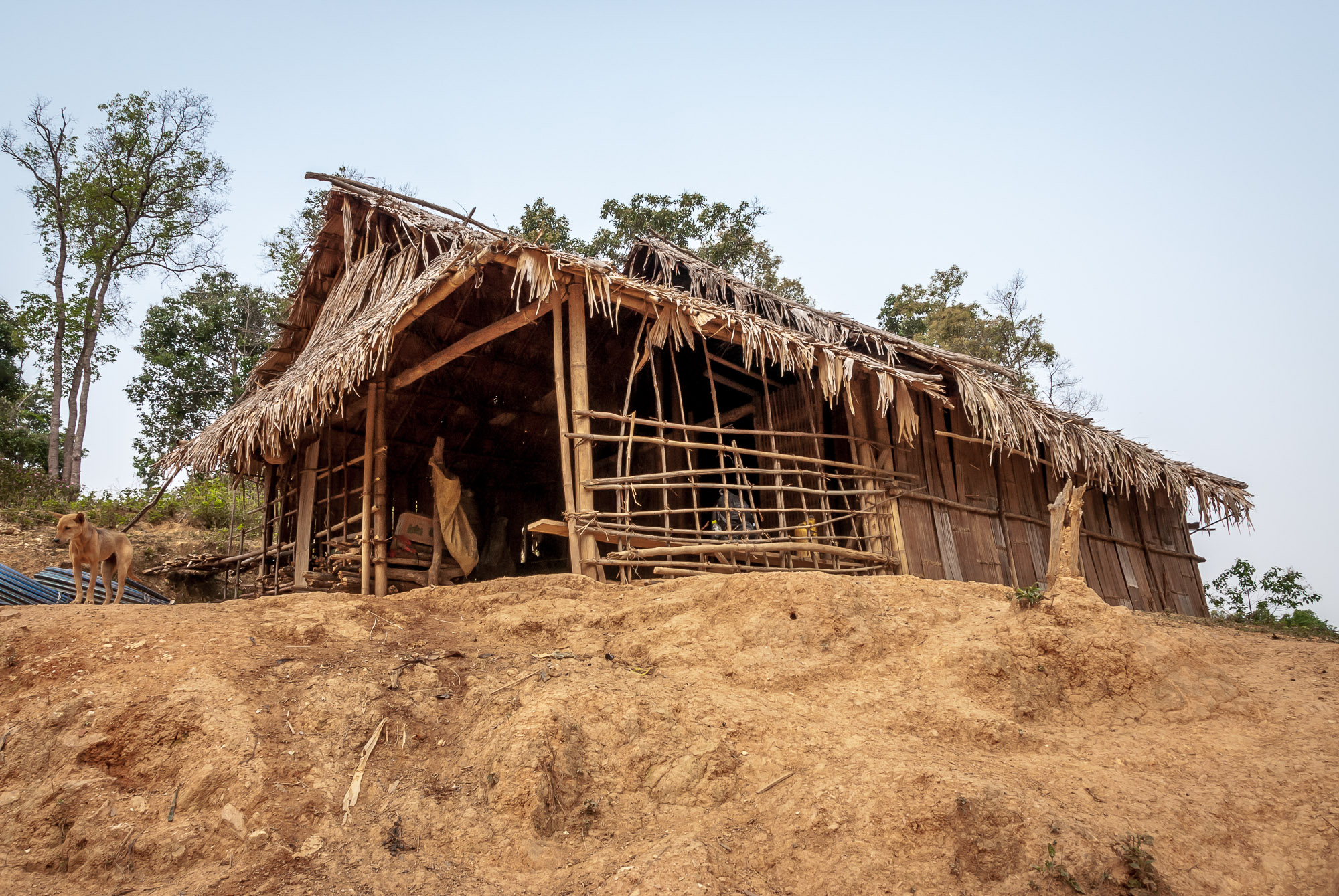
It was an incredible opportunity to experience a very different way of life. The villagers were reserved but welcoming. A small group of local girls took it upon themselves to be our unofficial tour guides, showing off flowers and berries that they picked from nearby bushes.
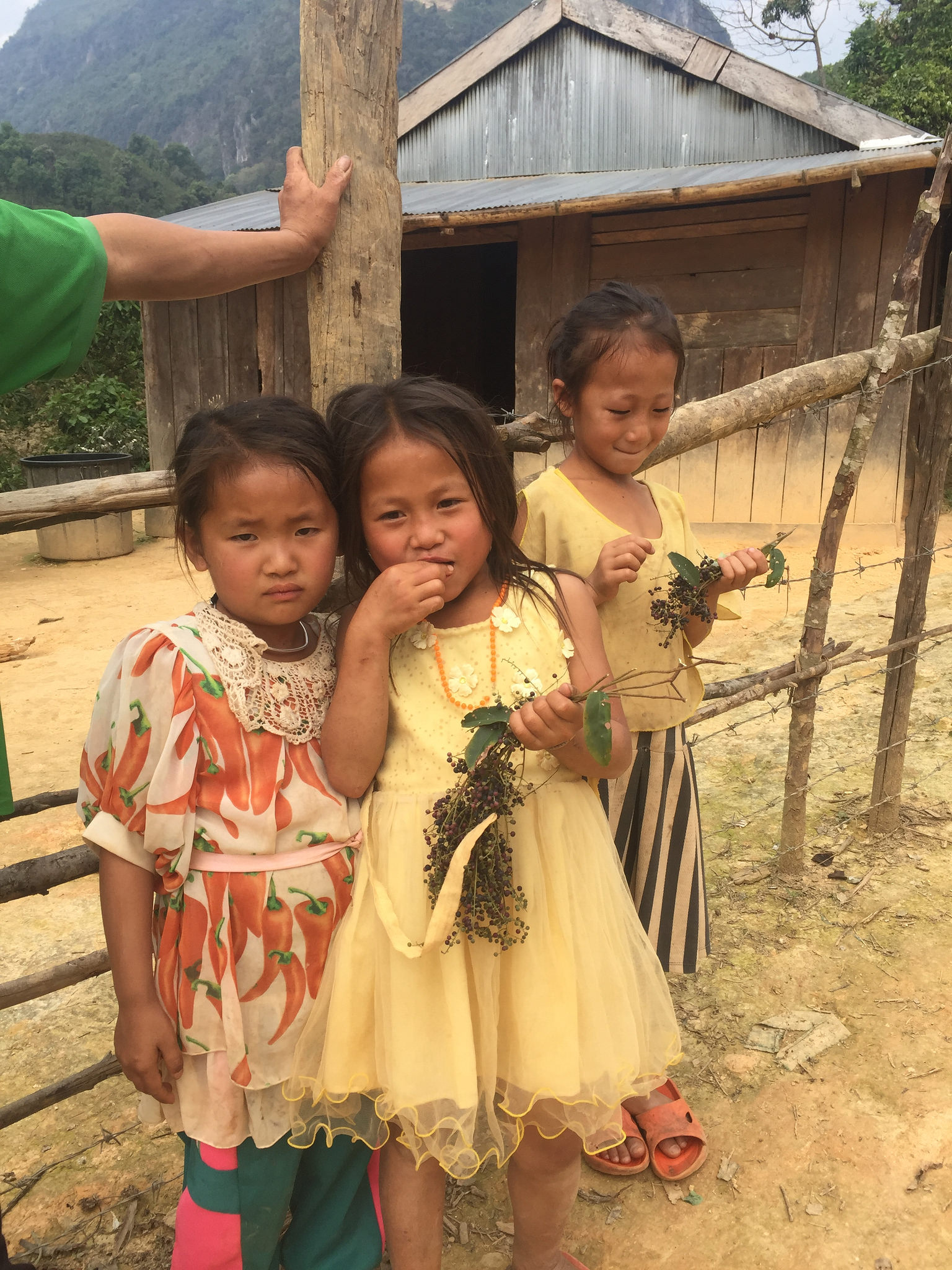
The next morning we began our descent down the mountain. Although we were going down, this day was at least as arduous as the previous one, with narrow trails, low hanging bamboo and slippery rocks to navigate. We finally made to the bottom where we accidentally interrupted a group of mud bathing buffalo.
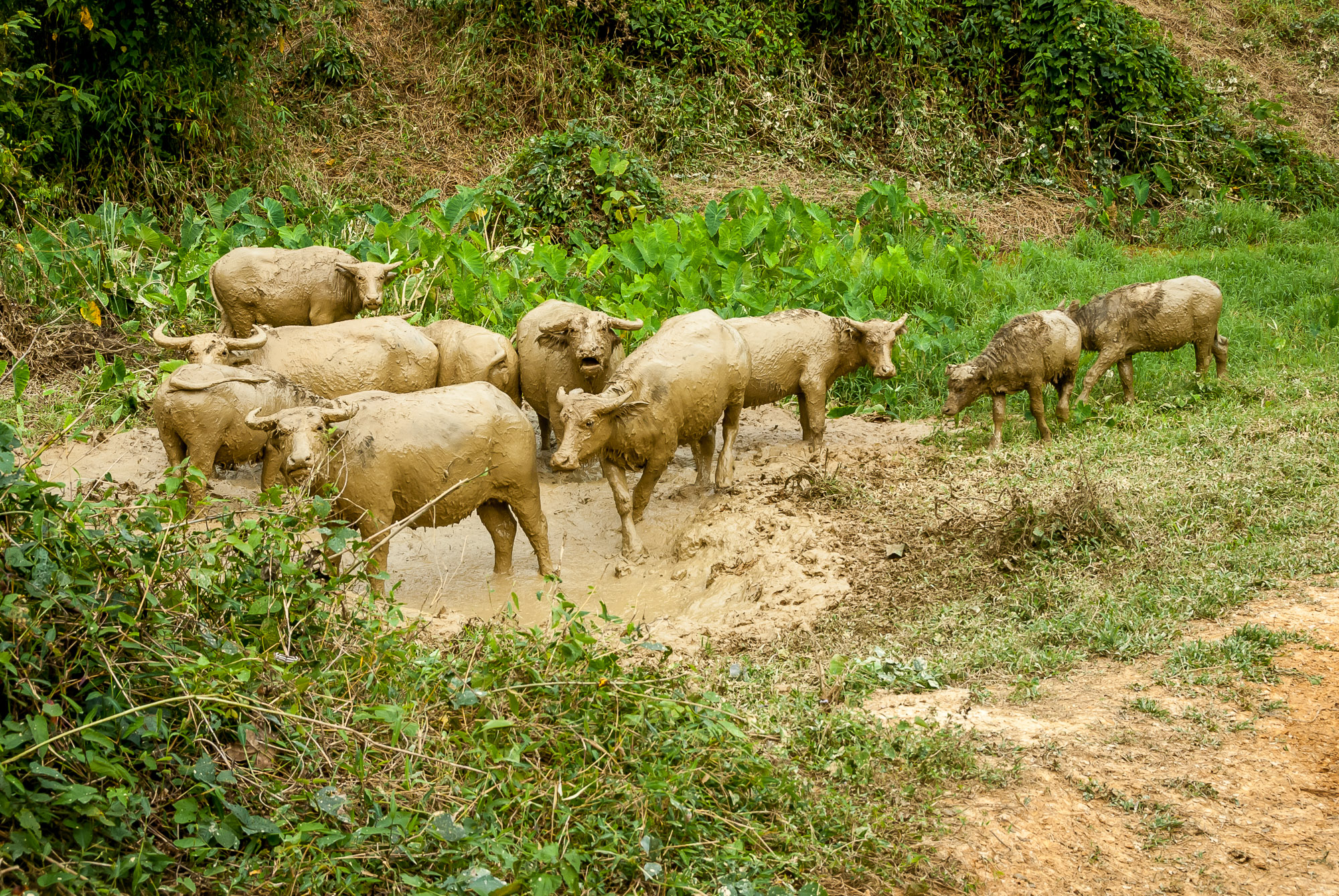
Although extremely challenging, this trek was a rewarding experience. Unfortunately our guide didn’t speak English as well as our guides on the previous trek so we weren’t really able to engage in any deeper discussions about the landscape we were traversing. He also wasn’t particularly available to serve as translator during our time in the village, making it hard to have meaningful interactions with the locals. Still, it was a wonderful way to experience Lao’s unique mix of cultures while also witnessing its dramatic natural beauty.
One thought on “Trekking in Northern Laos”